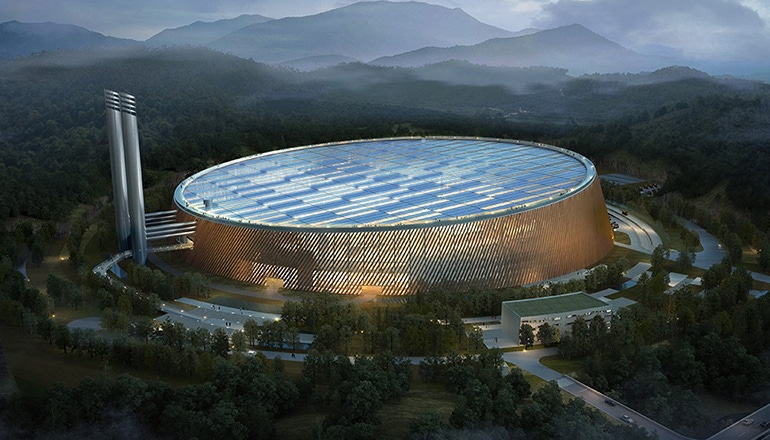Once fully operational, the plant will be able to process 5,000 tonnes of waste a day and generate electricity for 20 million people.

China is in the process of developing a facility just outside Shenzhen in southern China that is expected to become the world’s largest waste-to-energy (WTE) plant.
Pandaily reports that once the plant is fully operational, it will be able to process 5,000 tonnes of waste per day—nearly a third of Shenzhen’s current daily waste output—and generate electricity for 20 million people.
The report also notes that China leads the way in the market, with the largest installed WTE capacity of any country, with more than 300 plants in operation. Furthermore, China’s WTE conversion capacity has increased annually by 26 percent over the past five years.
The plant, however, has been met with opposition from local residents and environmental groups who fear it will emit "dangerous levels of dioxins and other toxins."
According to an Inkstone report, thousands of people have taken to the streets in a central Chinese city in a week-long protest against the construction of a waste incineration plant. Protesters carried banners and chanted as they marched against a waste-to-energy plant that could be built next to residential areas in Yangluo, a neighborhood in the Xinzhou district in Wuhan, the capital of Hubei province.
Pandaily has more details:
China is undertaking yet another ambitious development just outside Shenzhen in southern China. The facility that will become the world’s largest waste-to-energy plant, once operational, will be capable of processing 5,000 tonnes of waste each day. The plant will generate electricity for Shenzhen’s 20 million people, who produce around 15,000 tonnes of waste daily.
The plant generates energy by capturing heat from incinerating waste material, which drives a turbine to generate electricity. Burning waste does release harmful CO2 emissions into the atmosphere, but according to the architects of the plant, at half the level of an average landfill site – where much of Shenzhen’s waste ends up. However, the Shenzhen plant and has still been met with opposition from local residents and environmental groups who fear it will emit dangerous levels of dioxins and other toxins.
About the Author(s)
You May Also Like


